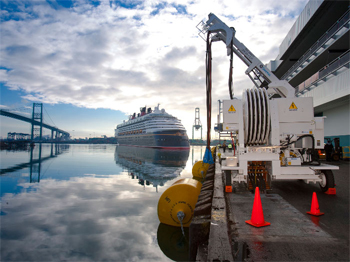 |
|
Please note: This summary is provided to help you understand the regulations. Consult the references provided for links to the full text of the regulations.
This page covers regulations that apply to emissions from marine engines of pollutants other than greenhouse gases. See also the TERC articles on greenhouse gas emissions, and on diesel fuel requirements for marine engines (covering sulfur content of fuels).
Who is covered by the regulations? Emission requirements for marine engines apply most directly to engine manufacturers. However, owners and operators of vessels should be aware that remanufacturing an existing engine is covered under the regulations, and that by specifying the work to be done on an engine, the owners and operators of the engine are considered to be "remanufacturers", and are therefore responsible for ensuring that the work is done in compliance with the regulations. What is the purpose of the regulations? Exhaust from all internal combustion engines, including marine engines, contains several hazardous pollutants:
Engine and pollution control technologies have been improving steadily, so modern engines emit much less than older models. The regulations are intended to ensure that new and remanufactured engines take advantage of advances in efficiency and emission control. Marine engines are regulated according to size and type (diesel vs. gasoline). Diesel (compression-ignition) engines. Current regulations recognize several size categories for compression ignition (diesel) marine engines. The numbers in parentheses indicate the section in the Code of Federal Regulations (CFR) under which each engine type is regulated:
The DieselNet website provides a detailed description of the standards. Gasoline (spark ignition) engines are regulated under 40 CFR part 1045 (rules applying to engines manufactured before model year 2010 can be found at 40 CFR part 91). This category typically includes smaller and recreational vessels. Most of the provisions in the standards apply to engine manufacturers, rather than to owners and operators of vessels equipped with the engines. But the regulations do specify several requirements that apply to owners and operators as well as to vessel manufacturers. Owners and operators must:
Special rules concerning operating conditions, recordkeeping, and reporting apply to owners and operators of large (Category 3) engines (see 40 CFR 1042.660). The DieselNet website provides summaries of U.S. and international standards that apply to diesel emissions from marine engines.
|
 Engine Emissions (Marine Engines)
Engine Emissions (Marine Engines)